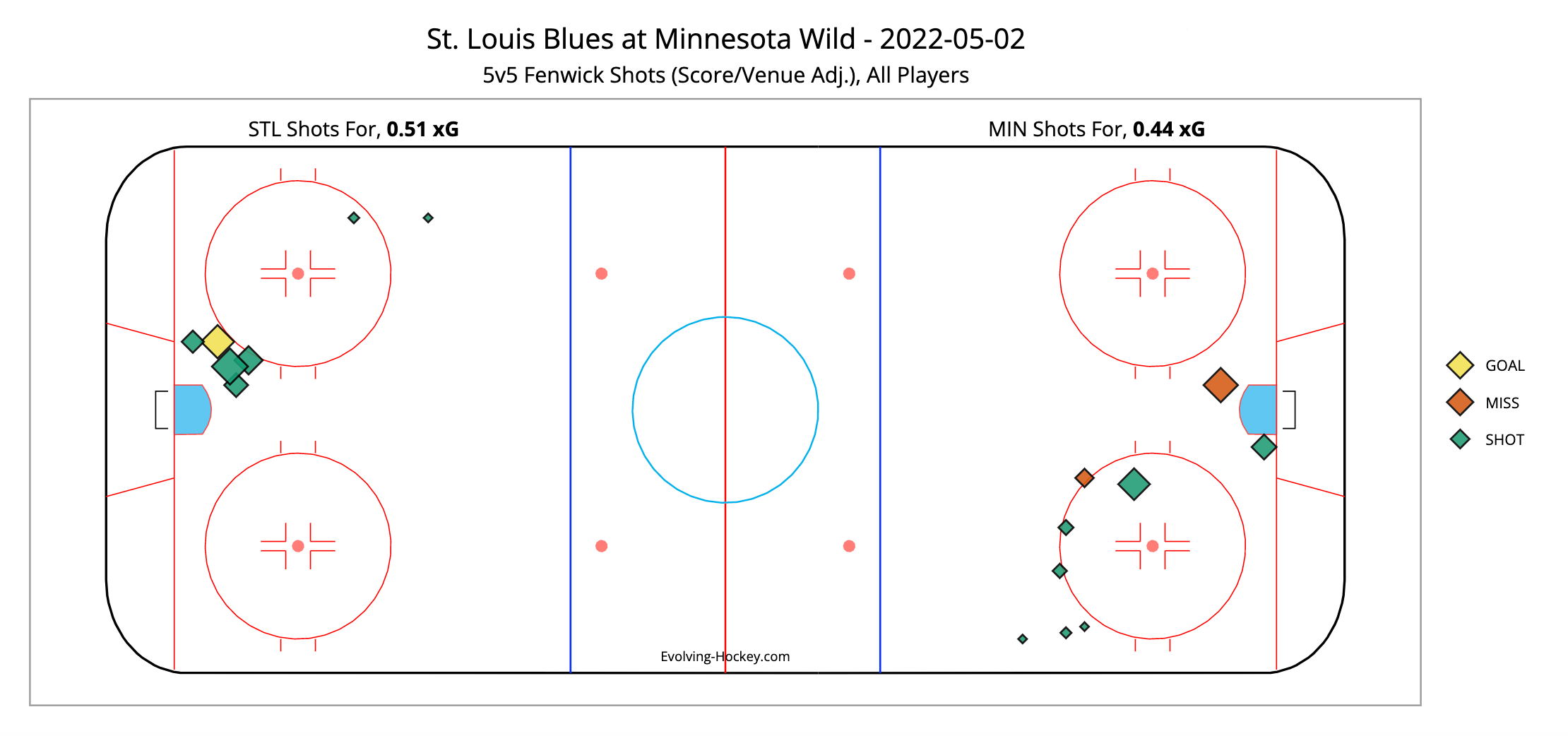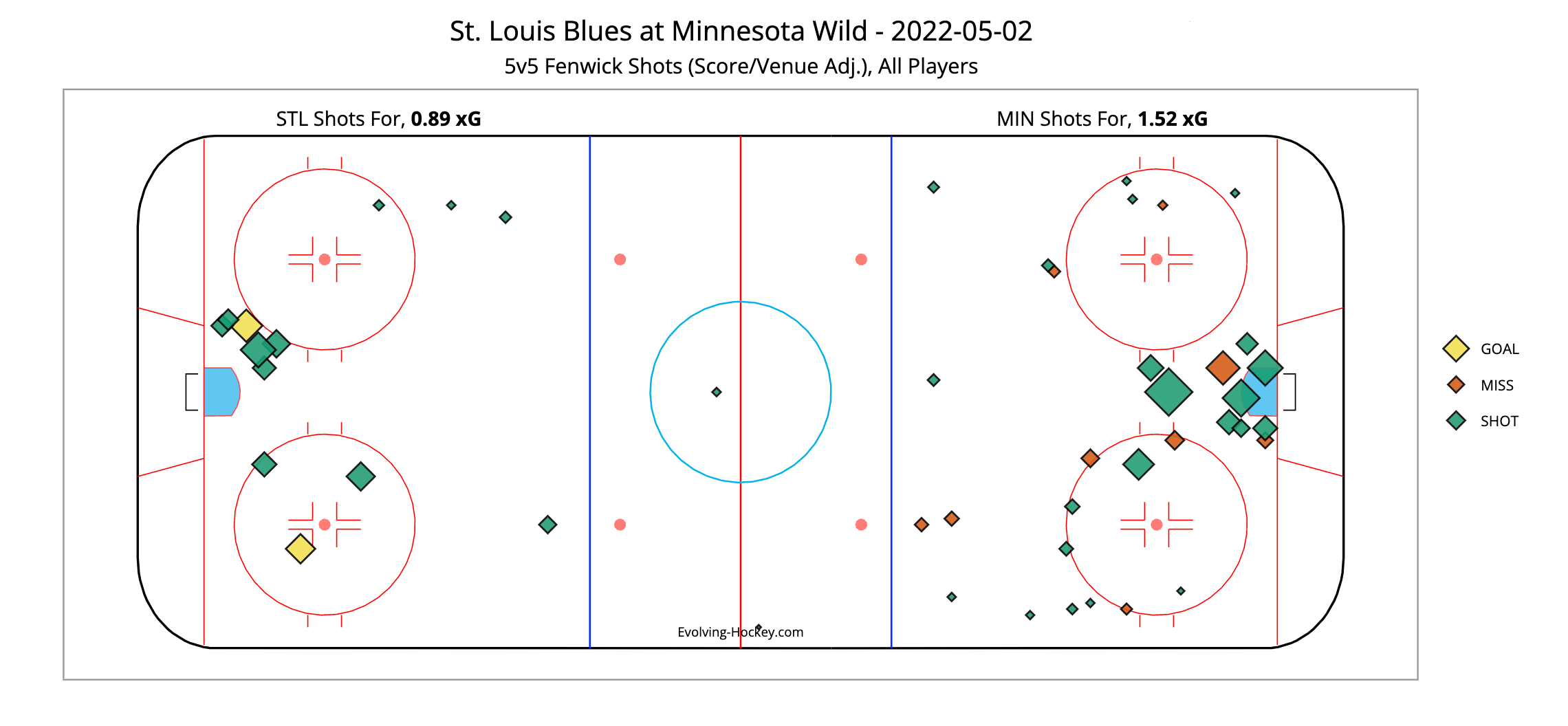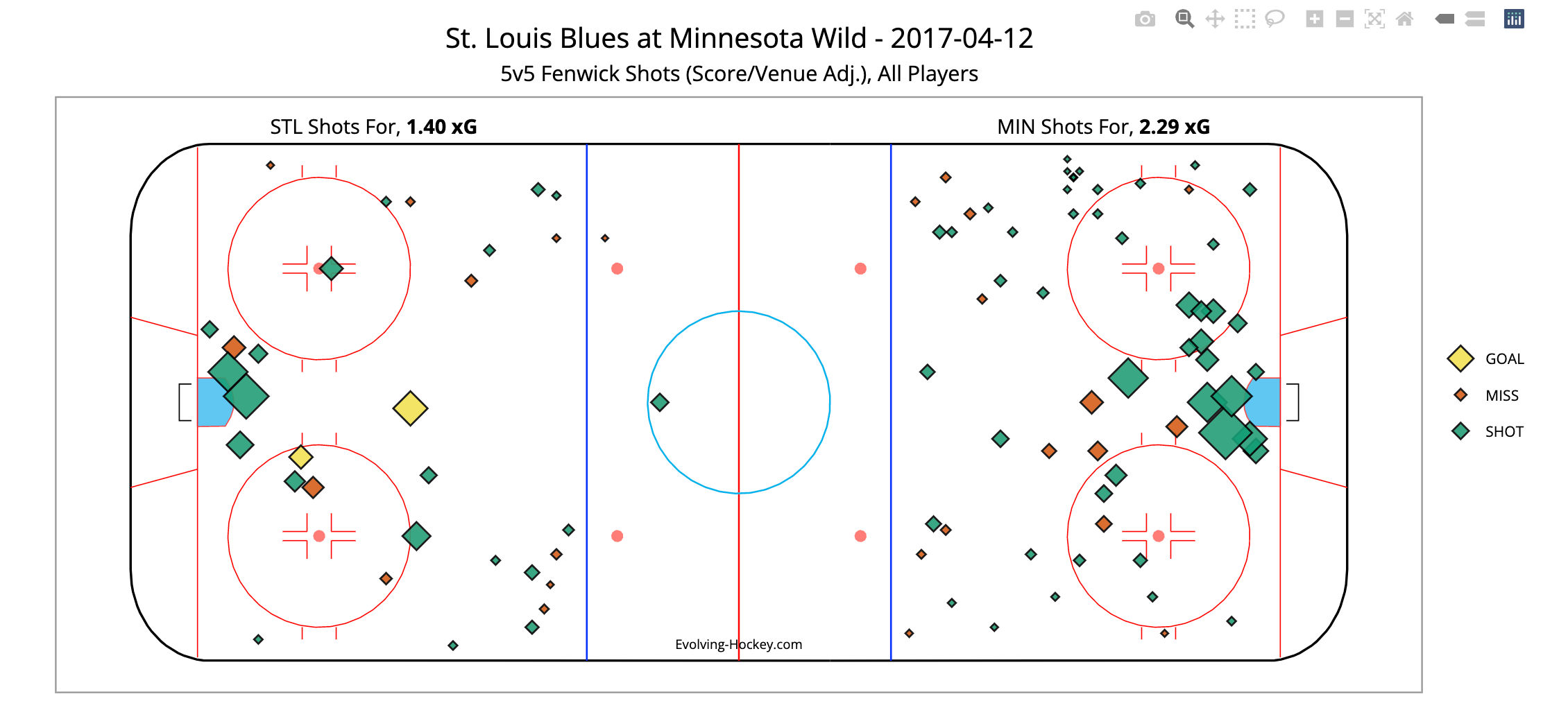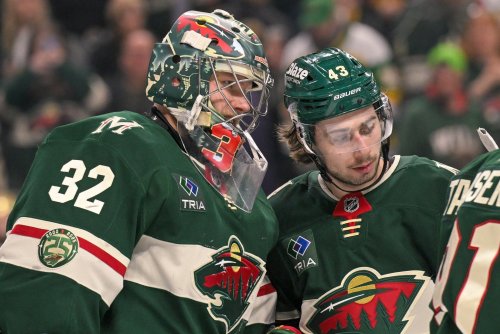
What positives can Minnesota Wild fans take away after Monday night's Game 1 beatdown from the St. Louis Blues? The most talented team in franchise history entered the game, only for the same old result: skating off the ice in a 1-0 deficit where victory never felt within reach.
Evidence that, somehow, some way, St. Louis has Minnesota's number is mounting after a fourth loss in four meetings this year. But the thing that gave the State of Hockey comfort entering the series was Minnesota's 5-on-5 superiority throughout the regular season. The Wild finished seventh in the NHL, controlling 53.8% of the expected goal share. The Blues were 19th at 48.6%, slightly underwater shot-quality-wise.
Great 5-on-5 play is a great measure of a quality team, and to a man, the Wild might come out of tonight confident they were the better 5-on-5 team. "Definitely gotta stay out of the box and just really limit their chances that we just keep giving them," Marcus Foligno said after the game. "I mean, three power play goals. You know, 5-on-5, we’re a better team."
Marc-Andre Fleury, who watched the offense from about 175 feet away, agreed. "I don’t think we can plan on a 5-on-5 game for 60 minutes but we still can try. Stay out of the box and keep their power play off the ice. Because I think 5-on-5 we looked good. We had the puck a lot. We didn’t give them too much. Good battle there."
Should they be pleased? On paper, absolutely. In terms of shot attempts, Minnesota had a massive 44-17 edge, according to Natural Stat Trick. Shots on goal: 23-13. High-danger chances? 12-4. On one hand, that's an overwhelming advantage. Coach Dean Evason noted how one-sided this looked at 5-on-5, saying "That'll give us a lot of positivity going forward."
Then again, look at the scoreboard and it's a different story.
https://twitter.com/aaron_heckmann/status/1521347384743276551
The core question of this Game 1 is simple. Was this a combination of bad luck and awful special teams? Or was there something wrong in Minnesota's game that the brilliant shot metrics couldn't catch? Evason clearly felt the former, though he added the caveat, "It'll be interesting. Obviously, we gotta dive into the numbers and see what they got... as far as shots and chances, and that'll give us a clearer picture in the morning."
We don't know if or how Minnesota's staff will re-evaluate Game 1 after a night to sleep on it. But they might walk away from that closer look into their shot selections with a bit of a different picture than tonight.
After notching a 2-0 first-period lead, St. Louis came out with a near-complete disinterest in pushing the pace at 5-on-5. Sure, they could turn the pressure machine back on with the power play, but 5-on-5 seemed to be about prevent defense.
Before then? Things were pretty even at 5-on-5. Minnesota had an edge in overall shot attempts (15-7, but played to a draw in shots (7-7), and actually trailed 3-4 in high-danger chances. The shot map from the period says it all.
[caption id=attachment_124376" align="alignnone" width="2220] MINvSTL, Period 1. Courtesy of Evolving Hockey[/caption]
MINvSTL, Period 1. Courtesy of Evolving Hockey[/caption]
Of the Blues’ seven shot attempts, five of them came within 15 feet of Fleury. As for the Wild, Tyson Jost got a pair by the goalmouth, followed by a shot in the slot from Kevin Fiala 25 feet out. As for the other 12 attempts? Six of them came from 30-plus feet out, averaging less than a 2% chance to score, each. The remaining six were blocked, fired into shinpads and sticks, mostly from the outside.
This continued into the second and third periods. Aside from two shifts by the Joel Eriksson Ek-Jordan Greenway-Foligno line (which we'll get back to), the Wild got almost no pressure in the second period. Of nine unblocked shots at 5-on-5, just three were within 20 feet of the net. One was a backhand from Jake Middleton (respectfully, not the most skilled defenseman), and two others were low-percentage shots. The rest were from the outside, all very low-percentage shots.
So what about those Eriksson Ek line shifts? One came at the end of the period; this was the other one, coming around the 12-minute mark.
The Wild had a rare opportunity where they were able to thread a puck by the net and create some havoc. Eriksson Ek and Greenway get some cracks at it, putting on tremendous pressure. The crowd comes alive as they prolong the shift, and Minnesota has St. Louis on the back foot with the opportunity to bring the game within one.
Then the puck goes to Matt Dumba at the point, who fires it on net. He's trying to shoot for a rebound with Eriksson Ek out front, but it's swallowed up by Ville Husso and the shift ends.
The shot had just an 0.8% chance of going in.
It was just that kind of night for Minnesota, with a third period that also saw many shots but almost zero coming in Husso's kitchen. All in all, Minnesota's night looked like this. Not pictured: 12 blocked-shot attempts, harmlessly into shin pads or the stands.
[caption id=attachment_124377" align="alignnone" width="2280] MINvSTL, All Periods. Courtesy of Evolving Hockey[/caption]
MINvSTL, All Periods. Courtesy of Evolving Hockey[/caption]
It's almost impossible to not draw a direct parallel to the Wild the last time they faced the Blues in the postseason in 2017. The Blues struck first, then held on for dear life as the Wild fired a whopping 78 shot attempts to St. Louis' 45. Unlike tonight, Mikko Koivu's team tied the game to force overtime, but the Blues got the dagger.
A quick look at the shot chart, though, reveals how similar it the game was. A smattering of scoring chances, but an overall game full of low-percentage, outside shots, with the Blues making the most of their shot attempts, tending to get inside.

That all said, it's understandable that the team would want to take the 5-on-5 advantage as a positive. Resigning oneself to demoralization after Game 1 is pointless, no matter the score. Super-confident athletes need to grab on to their successes to keep that confidence going forward, even if it isn't 100% warranted.
But even if Minnesota takes their shot attempt advantage as a silver lining, they can't rest on that and refuse to adjust. They have to take things inside. And it seems like they may know it, even if they aren't broadcasting any unhappiness with their shot selection. "We have to be patient, all of us, the whole team has to be patient," Fiala said, describing how to counter the way St. Louis defended Monday. "Just stay with it, skate a little more, and don't get frustrated."
Game 1 was a dud, but what's done is done. The only focus now is how to win four more games. To do that, Minnesota's going to have to find those scoring areas and evade Blue shinpads and sticks. The only way to do that is to stop settling for low-percentage outside shots and somehow, someway, find a route to the net.
Think you could write a story like this? Hockey Wilderness wants you to develop your voice, find an audience, and we'll pay you to do it. Just fill out this form.








Recommended Comments
There are no comments to display.
Join the conversation
You can post now and register later. If you have an account, sign in now to post with your account.
Note: Your post will require moderator approval before it will be visible.